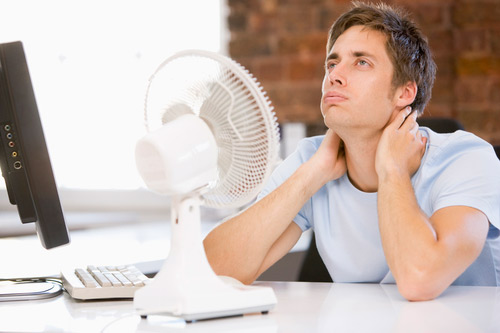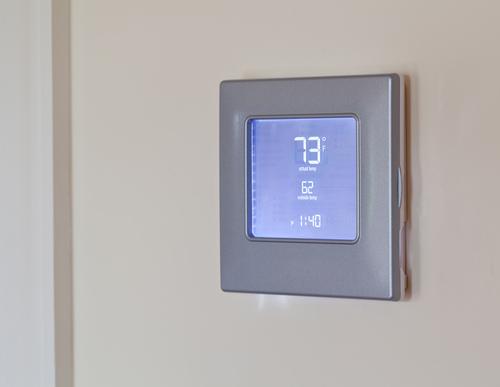5 Ways to Know If Your Home’s Thermostat is Malfunctioning
Heating and cooling systems can fail, leaving you and your family in an uncomfortable situation. Although you might suspect your furnace, air conditioner, or heat pump, sometimes a simple problem causes your HVAC to malfunction.
For example, when you’re either too hot in the summer or too cold in the winter, your thermostat might have a problem. Under normal operation, your thermostat will activate your heater or air conditioner when indoor temperatures change beyond a user-defined threshold.
If the device has failed, it will not appropriately activate heating or cooling according to the settings you have chosen. Use the following five ways to tell if your home’s thermostat has malfunctioned to help you understand the heating or cooling problem that affects you.
 1. Test it for Proper Operation
1. Test it for Proper Operation
Typically, when your thermostat senses the temperature in your Winston-Salem home, it compares it to its settings to determine whether to run your heating or cooling system. A discrepancy can exist between the actual temperature inside your home and the temperature sensed by your thermostat, so it will not activate your system.
Similarly, especially with an analog thermostat, a discrepancy can exist between the setting and the actual temperature threshold that activates the system.
Conduct a simple test by exaggerating the settings of your thermostat. For heater issues, try setting the thermostat to heat to a temperature of at least five degrees warmer than you’d expect.
For cooling, set your thermostat a minimum of five degrees cooler than what you desire. Doing this will overcome any intolerances of your thermostat and trigger an appropriate response if your thermostat still works.
2. Check for Other Causes of Failure
Although your home’s heating and cooling system seems simple, a variety of problems can cause it to fail. For example, temporary electrical conditions could have activated the circuit breaker, causing your system to fail, regardless of its thermostat settings. Visually inspect your circuit breakers to make sure the ones that control your heating and cooling systems rest in the “On” position.
You can also check the other settings of the thermostat to see if you have set it correctly.
For example, if you set your thermostat to “Heat” when you want to cool your home, it will produce unexpected results. Suppose you want to cool your home to 72 degrees after realizing the indoor temperature is 80 degrees, nothing will happen if you have left your thermostat setting in the “Heat” position until the temperature naturally dips below 72 degrees.
Check your thermostat to make sure the switch that allows you to select Heat, Cool, Fan, or Off points to the action you desire.
If this check indicates that your thermostat functions, but not at the proper settings, you should consider replacing your thermostat with a programmable thermostat that allows precision when measuring temperature and setting threshold temperatures.
3. Inspection and the Manual Bypass
You might not want to do this check if you do not have experience with simple wiring. If you have familiarity with circuit breakers and wiring, conduct the bypass test. First, switch the circuit breakers for your system to the “Off” position.
Next, remove the mounting screws that hold your thermostat to the wall. Inspect the wires connecting the device to make sure they are properly attached to the terminals. If a wire seems detached, re-insert it into the proper terminal and tighten the screw. If the terminal screws look loose, but the wires have not detached, tighten the screws to make sure the wires make proper contact.
 If you have verified the proper connection of the wires leading to your thermostat, try shorting them together and then turn the breaker to the “On” position.
If you have verified the proper connection of the wires leading to your thermostat, try shorting them together and then turn the breaker to the “On” position.
If your system immediately activates, you might have a defective thermostat.
Do not leave your system running this way. Switch the breaker off and call immediately for thermostat repair in the Winston-Salem area.
4. Think about the Location
If your heating and cooling system doesn’t seem to work, something nearby could affect the ability of the thermostat to function properly.
For example, if you have a lamp, television, or another heat source near the thermostat, it can cause the device to misread the actual temperature of your home as warmer than actual.
Similarly, drafts from a nearby door or window can cause your thermostat to read the temperature as cooler than actual. In such a case, you won’t need to call for thermostat repair, but you might need to have a professional technician come to relocate your thermostat to a spot where it can function properly.
5. Replace the Battery
A programmable thermostat uses a battery for power. As the battery ages, the thermostat can start operating erratically until it completely stops working. If you have this type of thermostat, try changing the battery to see if it starts working properly. If you need help doing this, you either check the documentation that came with your thermostat, or you can call an HVAC technician for assistance.
For quality services in your Winston-Salem, NC home, call Blaze Air at (336) 788-3222.